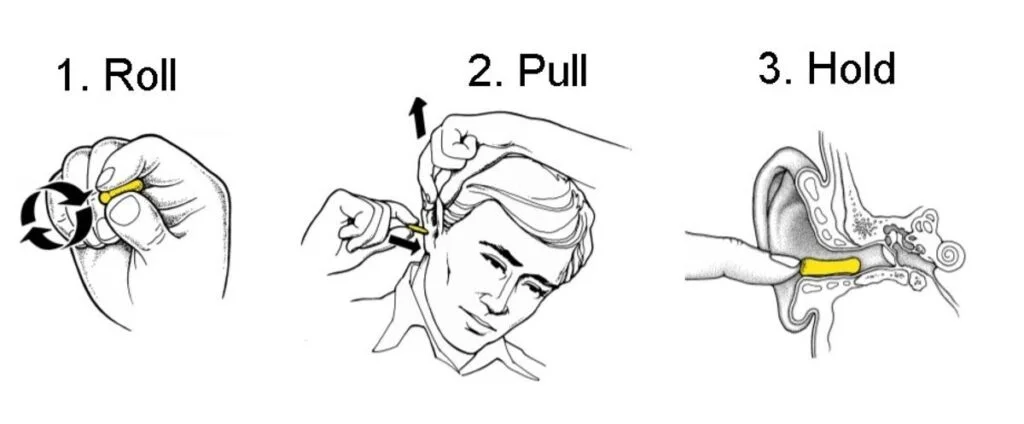TopriseSafety has been one of the leading safety earbuds manufacturers and suppliers in China since 2009. Our commitment to quality ensures users find reliable hearing protection. This blog guides you through selecting the best safety earbuds. We’ll cover materials, essential certifications, and innovative designs. Learn how to calculate real NRR effectively and discover proper wearing techniques. With the right knowledge, you can enhance your safety and comfort in noisy environments. Explore these insights to make informed choices about safety earplugs.
Safety Earbuds Materials
Safety earplugs commonly use PU and silicone materials. PU safety earbuds offer a comfortable, flexible fit. They provide excellent noise isolation and durability. PU is lightweight and molds well to ear shapes. However, they may degrade over time with exposure to moisture.
Silicone safety earbuds provide a soft, hypoallergenic option. They resist heat and moisture, ensuring longevity. Silicone offers a good seal against noise and feels comfortable during extended use. However, they can feel slightly bulkier than PU options.
In summary, PU provides flexibility and lightweight comfort, while silicone offers durability and hypoallergenic properties. Choose based on your personal comfort and usage needs. Both materials effectively reduce noise when worn properly.
Safety Earbuds Certificates
AS/NZS 1270: This standard specifies requirements for safety earbuds in Australia and New Zealand. It evaluates their noise reduction, comfort, and durability. Manufacturers must test safety earplugs to ensure compliance with these criteria. Certification confirms their effectiveness in noisy environments.
EN 352-2: This European standard focuses on safety earbuds and their noise reduction capabilities. It outlines testing methods for sound attenuation and proper fit. Safety earplugs must meet strict requirements for user comfort and protection. Certification indicates reliable performance in various settings.
ANSI S3.19-1974: This standard provides guidelines for testing safety earbuds in the United States. It measures their noise reduction effectiveness and performance. Compliance ensures safety earplugs meet necessary safety levels for workplaces. Certified products help protect hearing in loud environments.
Safey Earbuds Design with String or not
Safety earplugss with strings offer secure attachment and reduce the risk of loss. They provide easy access when not in use. However, strings can feel bulky or uncomfortable during extended wear.
Safety earplugs without strings promote freedom of movement and a more lightweight design. They enhance comfort and fit for prolonged use. Yet, without strings, users might misplace them easily. Consider your activity level and comfort preferences when choosing safety earplugs with or without strings.
How to Wear Safety Earbuds?
To wear safety earbuds, first roll the earbud between your fingers. This helps compress it. Next, pull your ear gently upward with your other hand. Insert the rolled earbud into the ear canal. Hold it in place for a snug fit. Ensure a good seal to block noise effectively. Repeat this process for the other ear. Always check the fit before exposure to loud sounds. Properly worn safety earplugs can maximize protection and comfort.

How to get the real noise reduction rate for safety earbuds and earmuffs respectively?
Apply the Attenuation Adjustment: An NRR is typically adjusted to account for real-world conditions and individual variations. The adjustment value is subtracted from the NRL. Common attenuation adjustment values are 3dB for earmuffs and 7dB for earbuds. Adjusted NRL = NRL – Attenuation Adjustment.
Calculate the NRR: The final step is to divide the adjusted NRL by 2 to obtain the NRR. NRR = Adjusted NRL / 2.
Eg1: marked NRR for earmuffs for Art No.: TPEM7001-B is 23dB. The real NRR shall be (23dB-3dB)/2 = 10dB.

Eg2: marked NRR for safety earbuds is 31dB for Art No.: TPEP7006A. The real NRR shall be (31dB-7dB)/2 = 12dB

How to get the real noise reduction rate when wearing the safety earbuds and earmuffs together?
Conclusion
Choosing the best safety earbuds enhances hearing protection and comfort. Consider materials, certifications, and design features for optimal performance. Understand real NRR calculations to assess effectiveness accurately. Proper wearing techniques ensure a secure fit and maximum noise reduction. TopriseSafety offers a range of quality safety earplugs to meet your needs. By applying the insights from this guide, you can make informed decisions. To place an order on safety earbuds, click here. And Below are two catalogues on certified safety earplugs and earmuffs.


